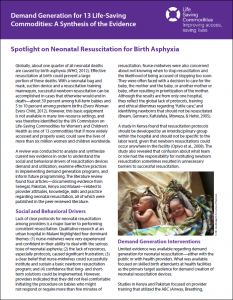Spotlight on Neonatal Resuscitation for Birth Asphyxia
Basic resuscitation equipment is not available in many low-resource settings, and was therefore identified by the UN Commission on Life-Saving Commodities for Women’s and Children’s Health as one of 13 commodities that if more widely accessed and properly used, could save the lives of more than six million women and children worldwide.


 This website is made possible by the support of the American People through the
This website is made possible by the support of the American People through the